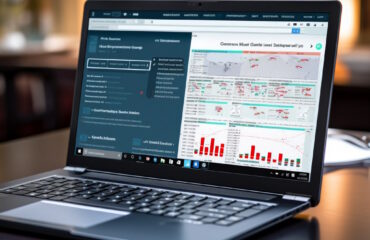In today’s rapidly advancing digital age, technology plays a pivotal role in reshaping various industries, including the medical sector. The World Forum for Hospital Sterile Supply (WFHSS) is no exception to this transformative wave. Embracing technological innovations can significantly enhance the efficiency and efficacy of hospital sterile supply operations, and one such technology with immense potential is API integration.
Understanding API Integration
API stands for Application Programming Interface, which acts as a bridge, enabling different software applications to communicate and interact with each other seamlessly. API integration involves the incorporation of APIs into existing systems or processes to facilitate the exchange of data and functionality. Although commonly utilized in the realms of web and software development, API integration has the potential to revolutionize hospital sterile supply management as well.
Challenges in Hospital Sterile Supply Management
Hospital sterile supply management is a critical aspect of healthcare operations, ensuring that medical devices and equipment are appropriately cleaned, sterilized, and maintained for safe use. However, the traditional approach to managing sterile supply operations can be resource-intensive and time-consuming. Manual data entry, disparate systems, and limited connectivity between various components can lead to inefficiencies, delayed processes, and potential errors.
Transforming Hospital Sterile Supply with API Integration
By embracing API integration, the WFHSS and healthcare facilities can overcome several challenges and unlock numerous benefits in hospital sterile supply management.
1. Seamless Data Exchange: API integration allows different software systems, such as electronic health records (EHRs), sterilization equipment, and inventory management tools, to share data effortlessly. This seamless data exchange streamlines processes, reduces manual data entry, and minimizes the risk of errors. For instance, information on sterilization cycles, equipment maintenance, and inventory levels can be automatically updated and accessed across relevant systems in real-time.
2. Improved Efficiency: With real-time data sharing and automation facilitated by APIs, hospital staff can efficiently track and manage sterile supply inventory. This ensures that medical devices are readily available when needed, reducing delays in surgical procedures and improving overall operational efficiency. For example, surgical teams can access real-time data on the availability of sterilized instruments, minimizing wait times and optimizing surgical scheduling.
3. Enhanced Safety and Compliance: API integration enables automated monitoring of decontamination processes, compliance testing, and maintenance checks, as specified in WFHSS Guidelines. This increased oversight ensures that medical equipment meets rigorous safety standards, minimizing the risk of infections and ensuring compliance with industry regulations. For instance, APIs can trigger alerts for equipment maintenance based on usage, ensuring that sterilization equipment remains in optimal condition.
4. Data-Driven Decision Making: Access to real-time data through API integration empowers hospital administrators and sterile supply managers to make data-driven decisions. Identifying trends, optimizing inventory levels, and predicting maintenance requirements become more accurate and efficient. Data analytics can also aid in identifying potential risks and opportunities for process improvement. For example, hospitals can optimize their inventory levels by analyzing historical data on instrument usage and demand patterns.
5. Enhanced Interdepartmental Collaboration:
API integration fosters enhanced interdepartmental collaboration within the hospital setting. Traditionally, different departments within a healthcare facility might operate in silos, leading to fragmented information and communication gaps. However, with API integration, data from various departments, such as surgery, sterilization, and inventory management, can be seamlessly shared and accessed in real-time.
For example, when a surgical team schedules a procedure, the API integration automatically updates the sterile supply inventory system with the list of instruments required for the surgery. This enables the sterile supply department to prepare and sterilize the instruments well in advance, ensuring they are readily available when needed. Additionally, the inventory management system can monitor usage patterns and order new supplies in a timely manner, preventing stockouts and optimizing inventory levels.
6. Seamless Integration of New Technologies:
The healthcare industry is continually evolving, with new technologies and medical devices being introduced regularly. When a hospital acquires state-of-the-art sterilization equipment or implements a more advanced inventory management system, APIs enable a smooth integration process. Data from the new technology can be effortlessly integrated with existing systems, preventing disruptions and reducing the learning curve for hospital staff.
Moreover, API integration facilitates the exchange of data between various vendors’ systems, making it easier for hospitals to adopt best-in-class solutions from different providers. This flexibility ensures that hospitals can tailor their sterile supply management setup according to their specific needs and preferences, optimizing the overall workflow and patient care.








